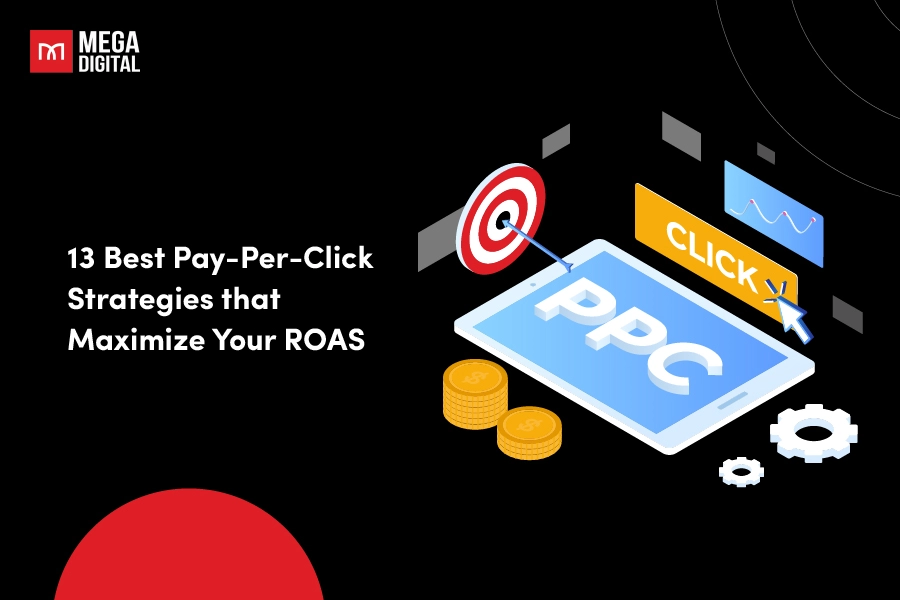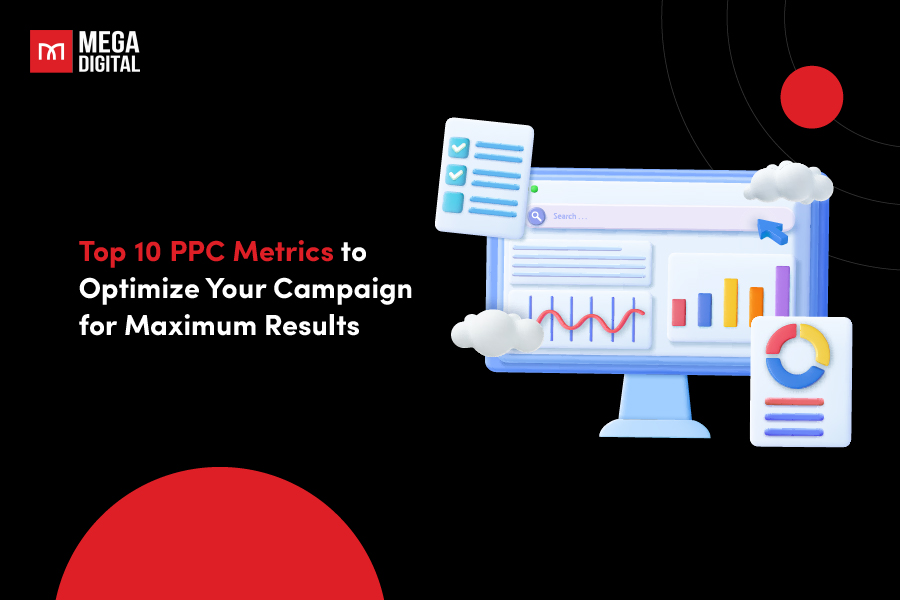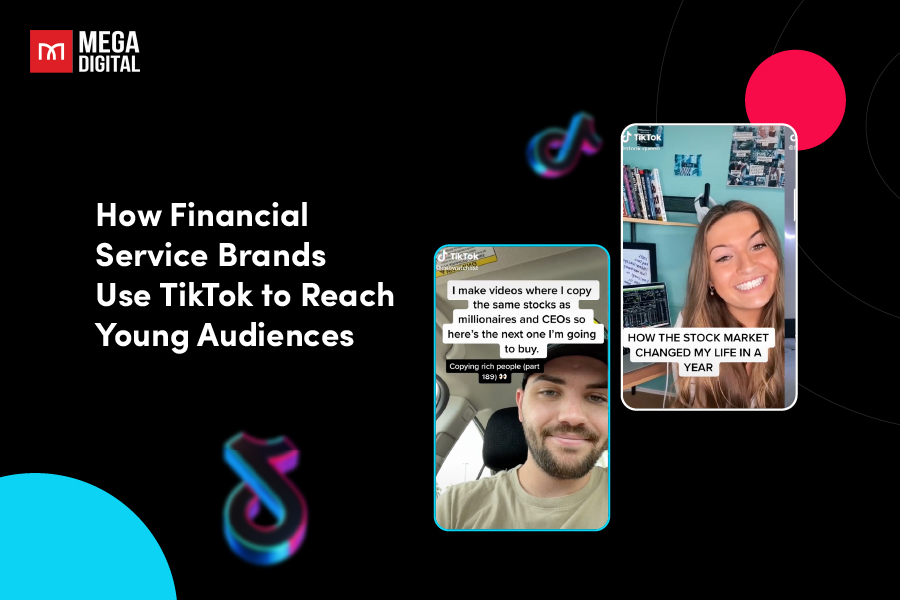What if your paid ads could reach audiences at a time when they are ready to discover new products and services? Google Discovery ads could be the answer. Google allows you to grab your audience’s attention before they search. The best part is that these ads are seamlessly integrated across various Google platforms.
Definition of Google Discovery ads
Discover is the feed of Google’s app and the mobile Google.com homepage.
Google Discovery ads is an advertising format by Google that allows advertisers to reach and engage with potential customers across various Google platforms, such as YouTube, Gmail, and the Google Discover feed.
You may encounter Google Ads Discovery campaigns as a single image or a carousel of images, helping advertisers get products and services discovered by potential audiences.
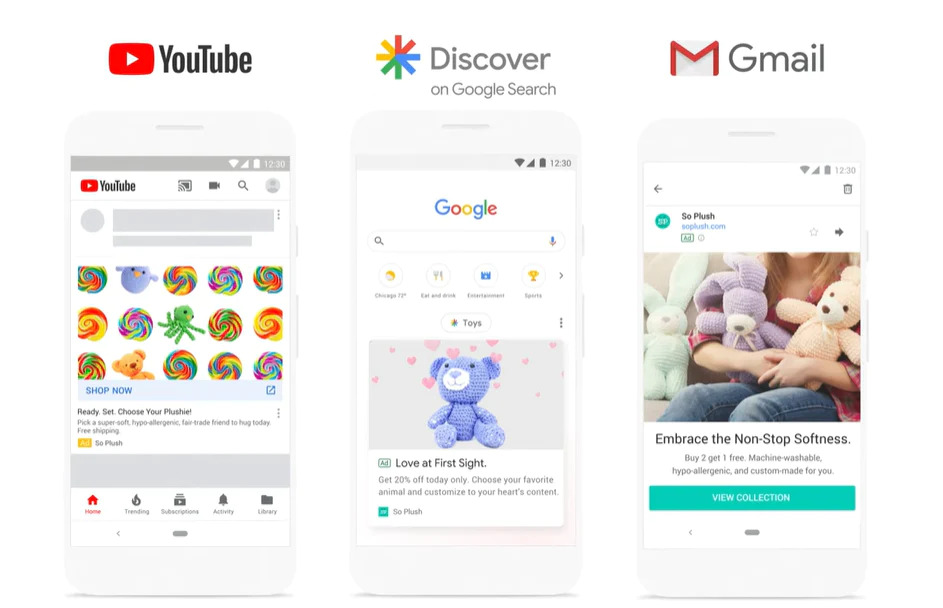
This Google ad type doesn’t require users to enter specific search terms or keywords. Instead, Google’s algorithms analyze user behaviors to deliver targeted ads to relevant audiences.
However, Google is replacing Discovery campaigns with the latest Demand Gen campaigns. This shift from Discovery to Demand Gen will occur gradually from August 2023 to March 2024.
>>> Read more: Google Demand Gen Campaign: New version of your Discovery Ads
Types of Google Discovery ads
Google Discovery ads campaigns have two popular ad formats that help businesses deliver the most relevant messages.
Standard Discovery ads
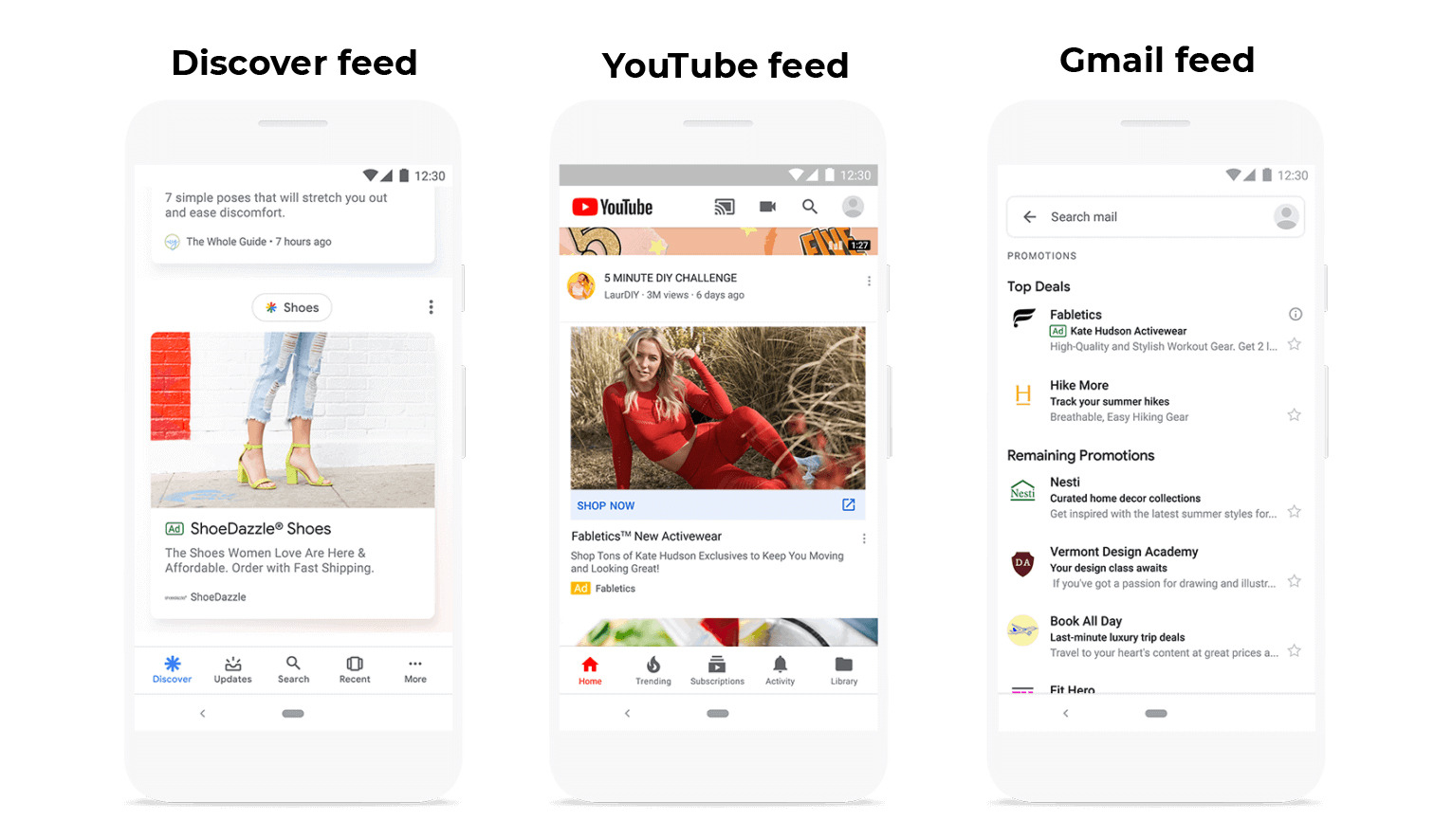
- Image ads: This is the most popular type of ad on Google Discovery ads, with its attractive design and image quality. Image ads can contain an image, title, and short description of your product/service.
- Video ads: Google Discovery ads also allows you to run video ads on the Google homepage, YouTube website, and other websites that are linked to content, products/services that users are interested in. Video ads specifically capture the attention and interest of users effectively.
Carousel Discovery ads
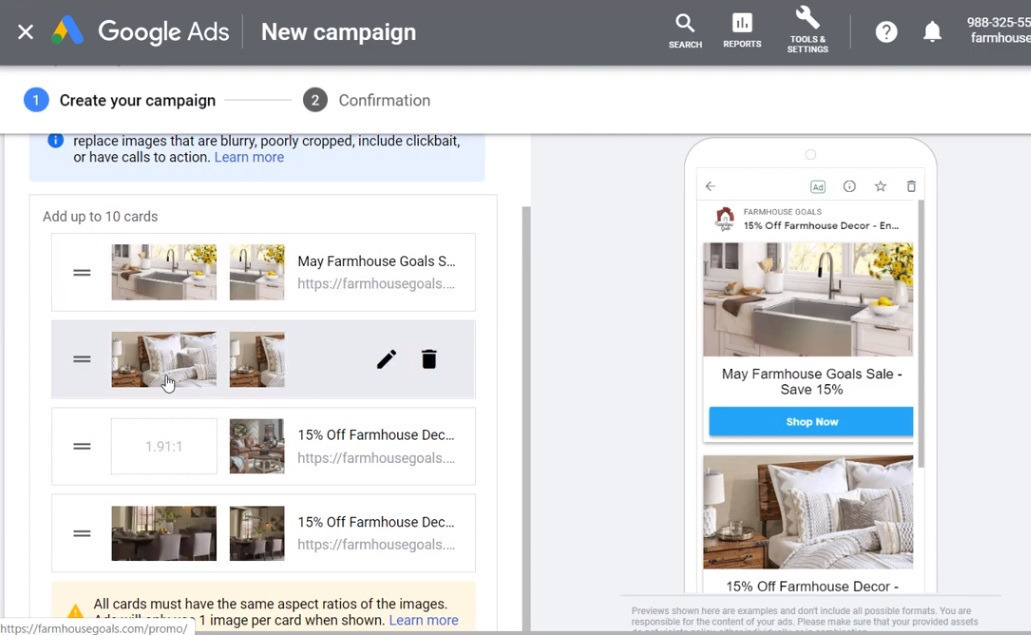
Carousel ads display multiple products or services in a single ad, like Facebook Carousel Ads. Users can scroll through and choose what they need. These ads are unique, convenient, versatile, and visually appealing.
Google Discovery ads examples
You’ve got an idea of what these ads do, but what do they actually look like? Let’s explore the visuals across Google channels.
Gmail
Discovery ads usually appear in either the Social or Promotions tabs.

When a user clicks on a Discovery ad, it opens within Gmail like an email. This familiar format allows users to engage directly with the ad content. It helps advertisers capture attention and effectively communicate their brand message or promotions via emails.
YouTube
Discovery ads appear in the YouTube app’s home page feed, marked by a small yellow ad box. They reach users browsing content, offering advertisers an effective way to promote their businesses in an engaged environment.

Google App
These ads can be identified by the small “Ad” text shown in the lower corner. When users scroll through their Google App feed, they may encounter Discovery ads seamlessly integrated with the organic content.
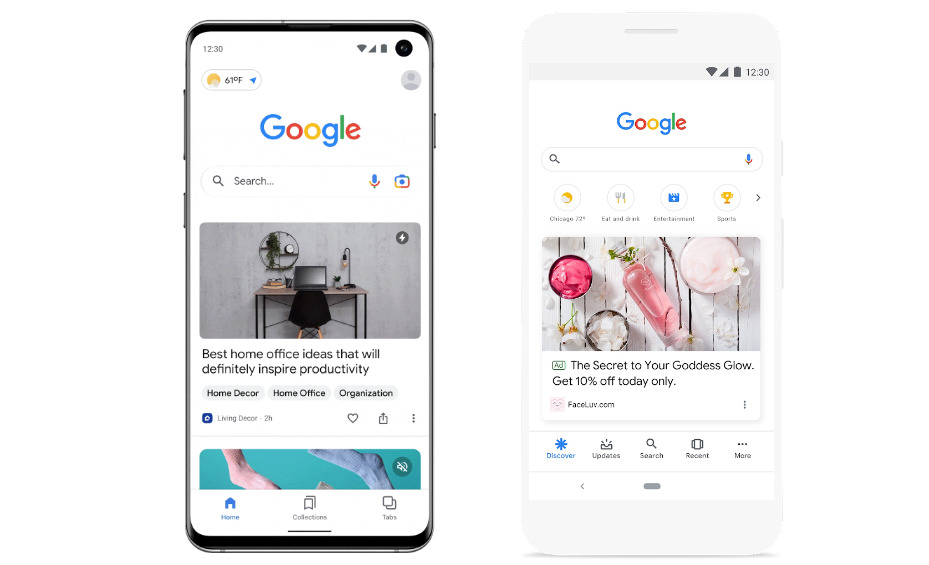
This placement allows advertisers to engage users who are actively exploring personalized content.
Benefits of Google Discovery Ads
When you execute a Discovery campaign, you enable your business to expand its reach to larger audiences and earn more conversions. Here are a few of the important benefits you’ll experience with Google Discovery campaigns.
Increase brand awareness and drive engagement
Discovery ads attract new audiences and create brand presence across Google channels and partner websites. Users who aren’t actively searching for related keywords can still discover your products or services.
Drive conversions
Discovery campaigns will increase website traffic, encourage newsletter signups, or boost sales. The automated targeting feature using machine learning algorithms ensures that ads reach relevant audiences. Therefore, they can utilize their wide reach to achieve your desired conversion goals.
Remarket to existing customers
Discovery campaigns effectively remarket to previous customers who have interacted with your brand. They target users who made purchases, engaged with your YouTube channel, or visited your website, increasing conversion rates.
>>> Read more: Google Ads Remarketing: Best Practices and How Does It Work?
Various bidding options

Discovery campaigns offer various automated bidding strategies to align with your ad performance objectives. Google Ads offers bidding options as follows.
- Maximize Conversions: aims to maximize the number of conversions you receive within your specified budget. It automatically adjusts your bids in real-time, hence targeting users who are most likely to convert.
- Target CPA (Cost per Acquisition): You set a desired cost per acquisition or conversion. Then, Google Ads adjusts your bids to help you achieve that target CPA. Historical data and machine learning will be utilized to optimize conversions.
- Target ROAS (Return on Ad Spend): you set a desired return on ad spend. From there, Google Ads automatically adjusts your bids to maximize conversion rate (CVR) to maintain or even exceed your target ROAS.
Simple steps to set up Google Discovery ads
Well, setting up a Discovery Campaign is simple. Most importantly, it should align with your marketing objectives. For example, you can focus on generating new leads, driving online sales, or building awareness & consideration for your brand.
Step 1: Start the campaign
In your Google Ads account, choose your campaign’s goal and choose Discovery as your campaign type.
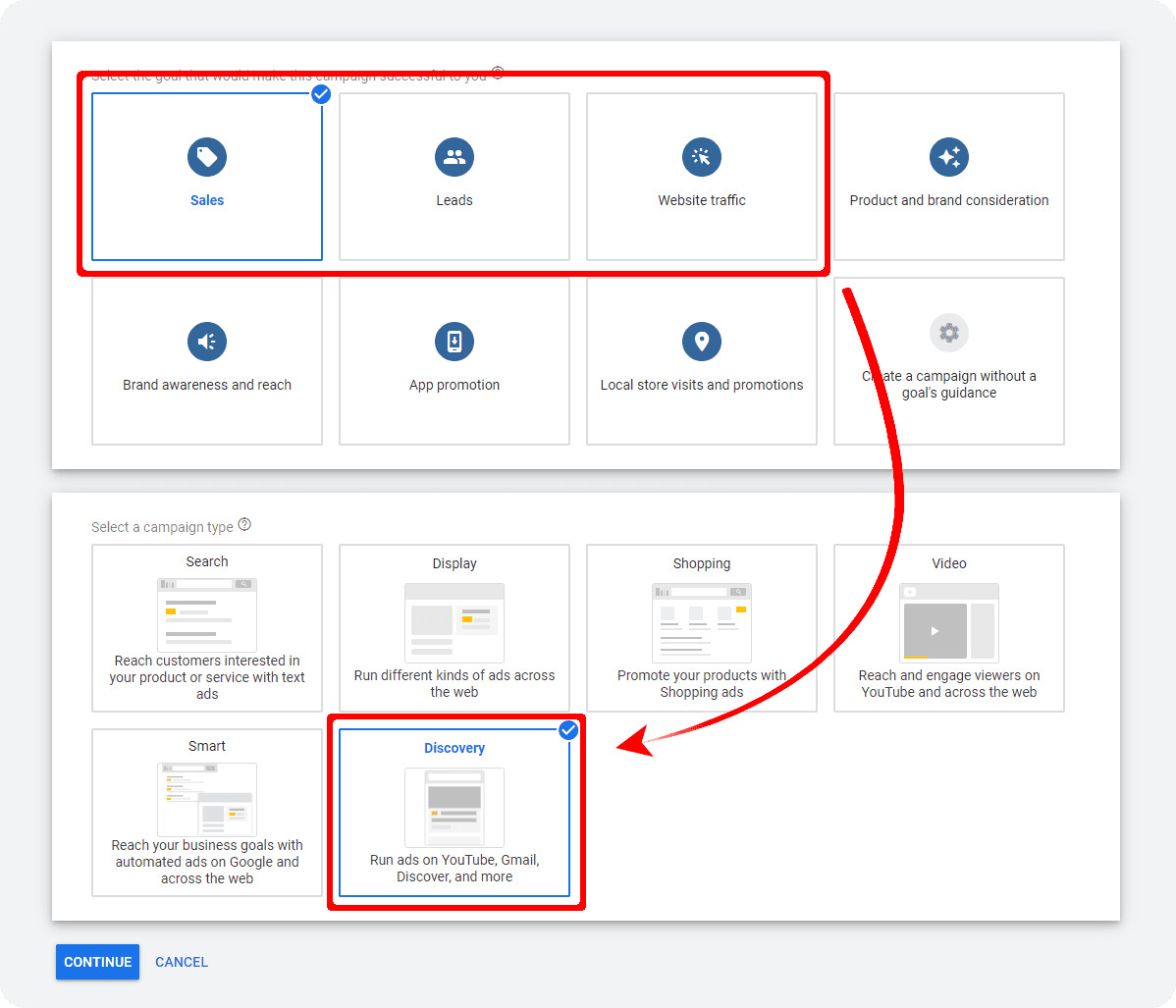
Enter your campaign name and choose the location you’d like to target.

Step 2: Select a smart bidding strategy
Smart bidding relies on Google’s powerful machine learning to set real-time bids for each and every auction to help you achieve your marketing objectives. You can select either the Maximize conversions or Target CPA bidding strategy.
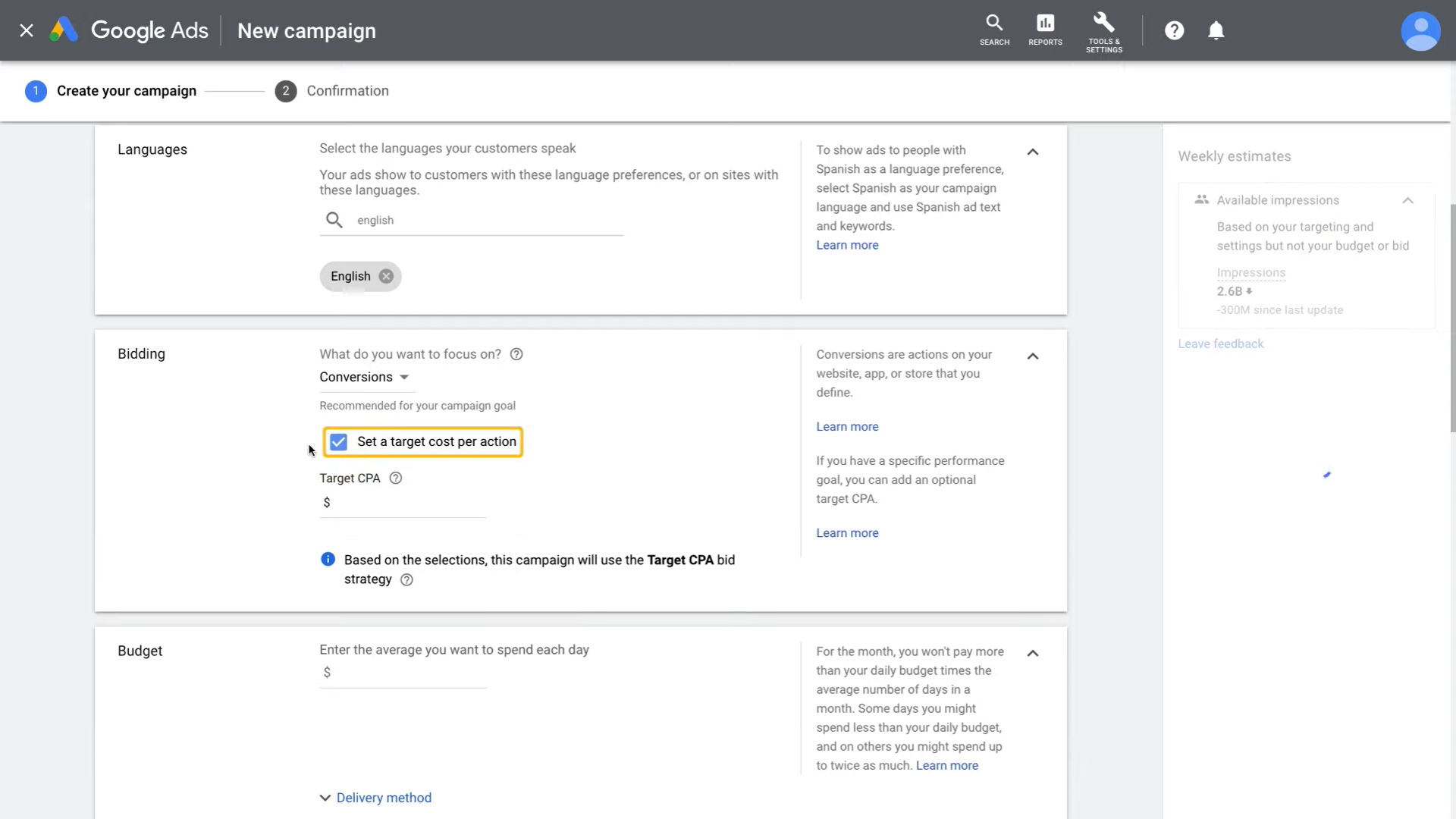
Maximize conversions will use your daily budget to gain as many conversions as possible within your set budget, while target CPA will drive as many conversions as possible using the target cost per action that you set.
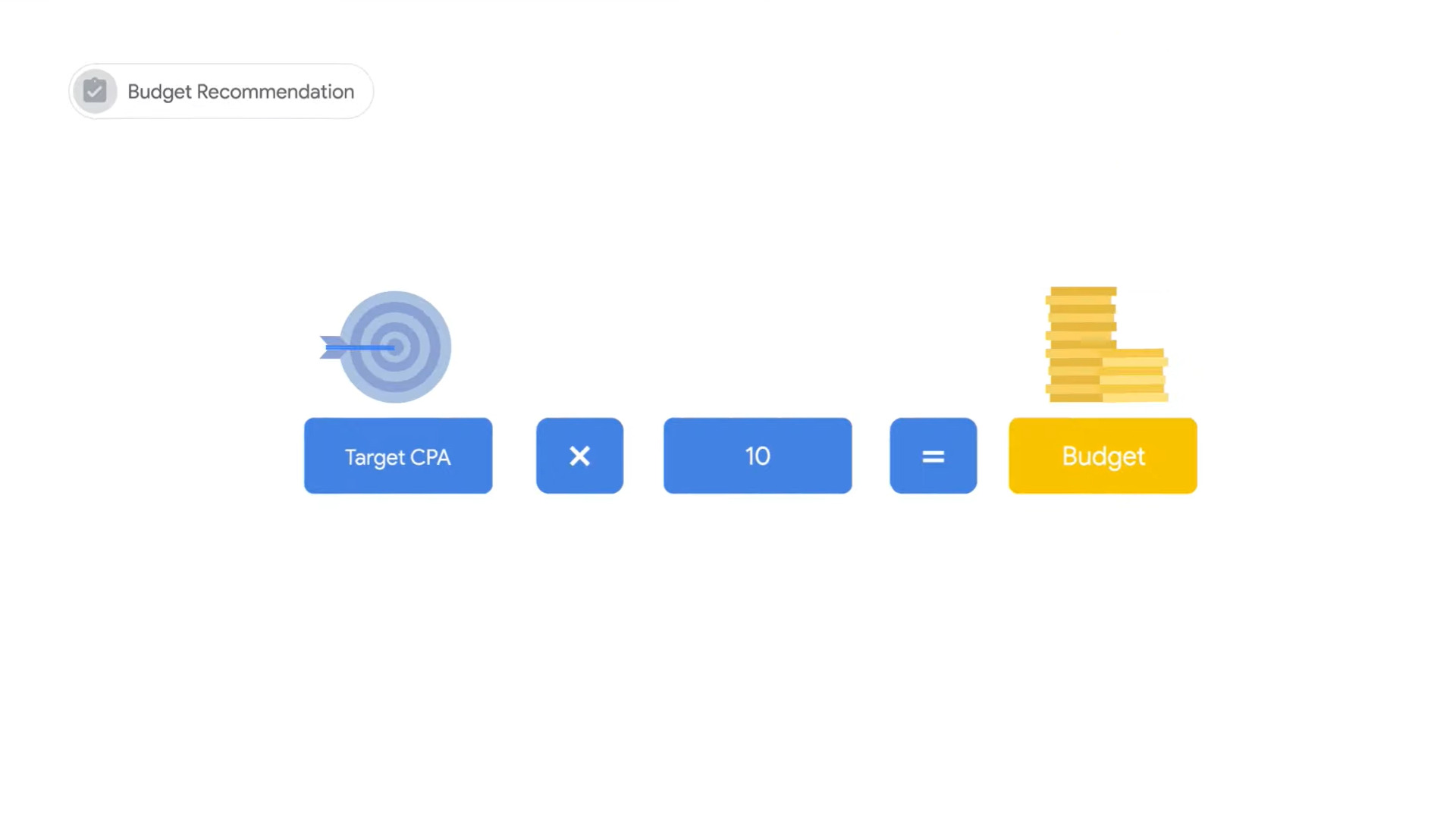
If you choose target CPA, make sure your daily budget is at least 10x your CPA.
Next, continue creating the campaign by creating an ad group.
Step 3: Create an ad group
Next, select one option for your audience targeting. If your marketing objective is to drive online sales or generate leads, start with performance audiences of:
- Remarketing
- Customer match
- Custom intent
- In-market
These audiences include people who have previously engaged with your brand or have already shown interest in your product or service.
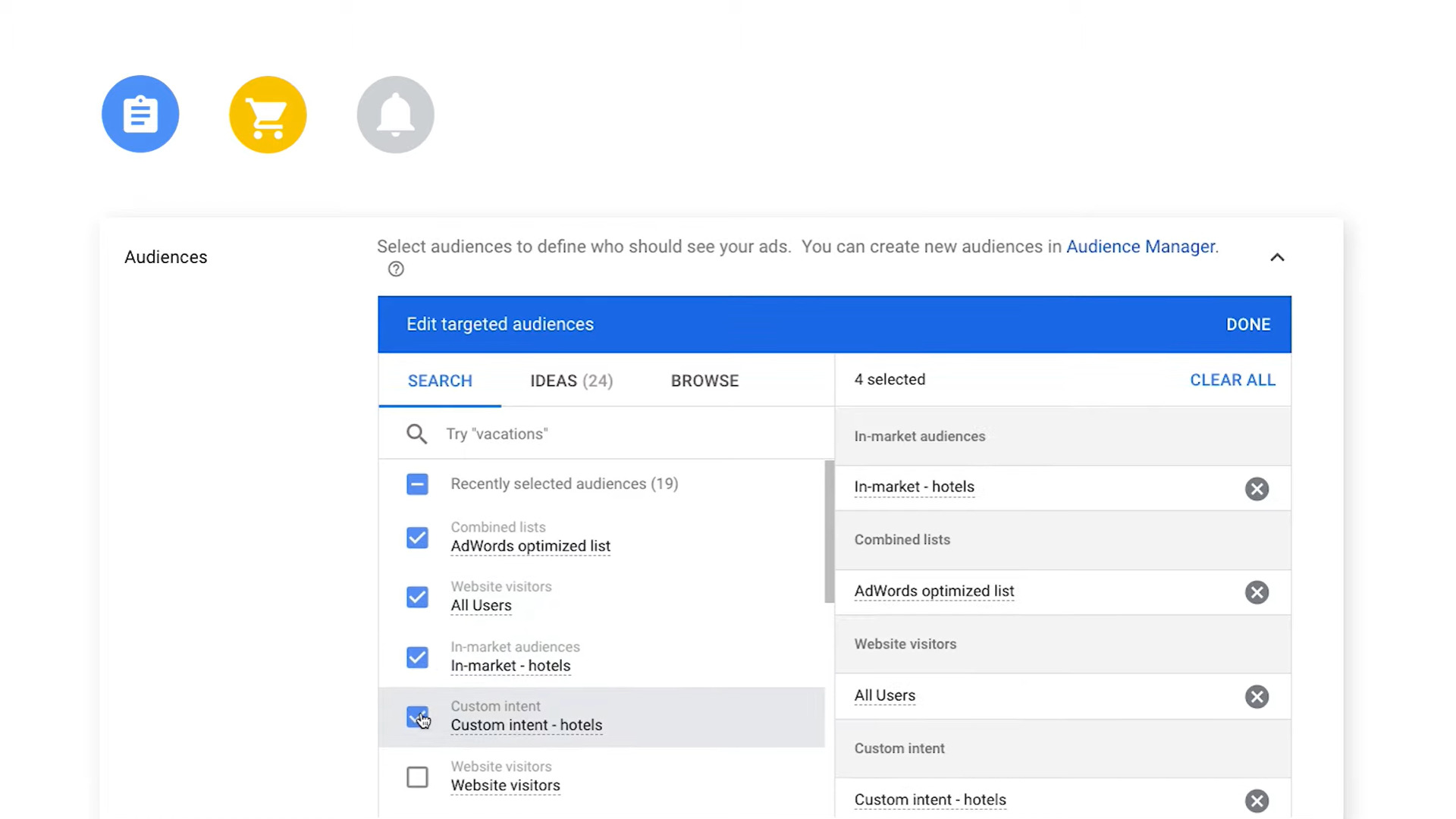
If awareness and consideration are your marketing objectives, consider also adding:
- Life events: Reach people during major life milestones.
- Affinity audiences: Based on interests and habits.
If you use custom intent, it’s recommended that you build an audience with 10 or more of the best-performing keywords from your Search campaigns.
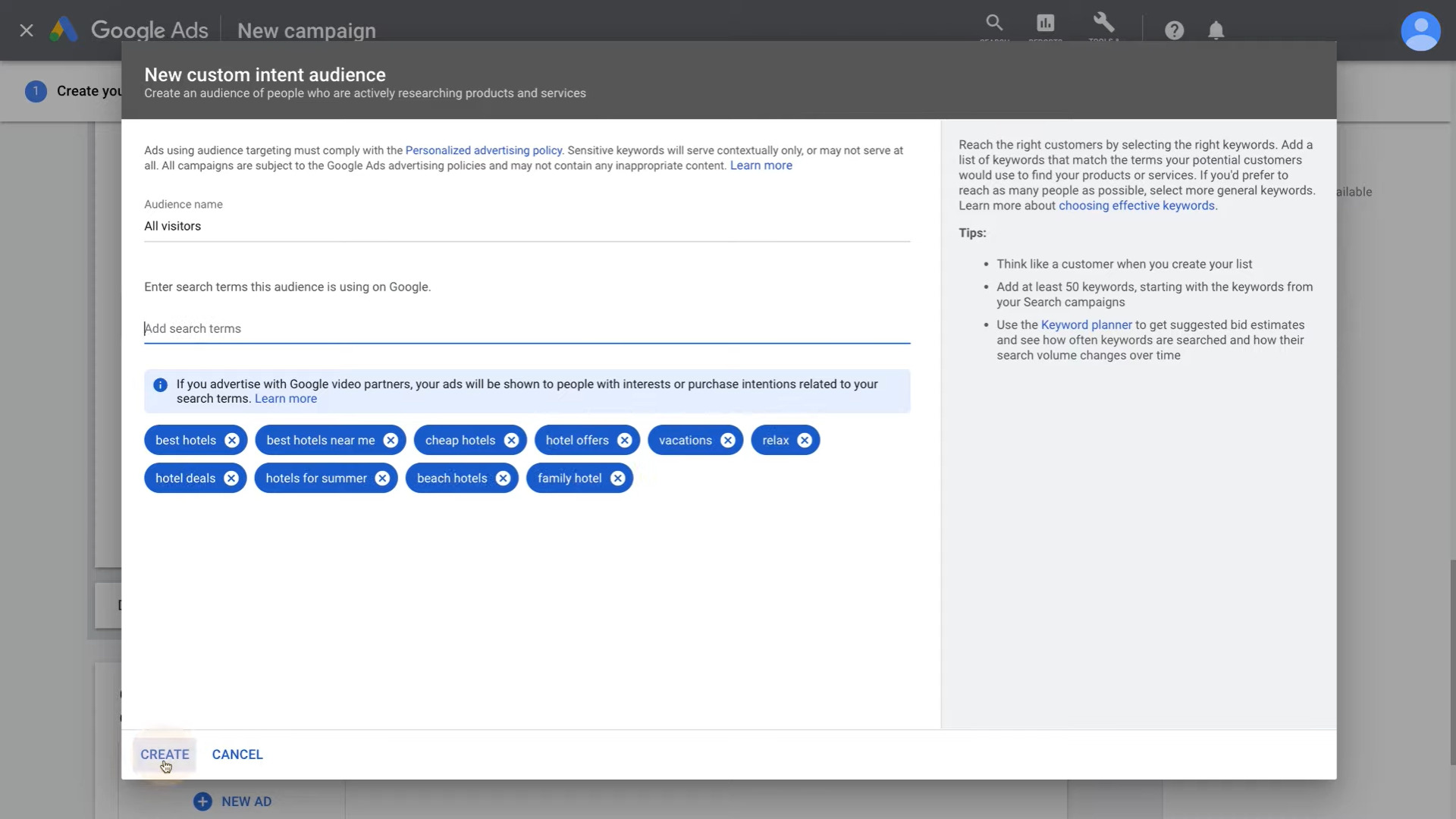
In order to broaden the reach of your selected audiences, be sure to turn on Audience expansion. Make sure to separate your audiences, like Remarketing and Custom intent, into different ad groups or campaigns.
Step 4: Add creative assets
These will be used to build visually rich and vibrant native ads, and are optimized for all Discovery feed experiences across Google. Next, enter your final URL.
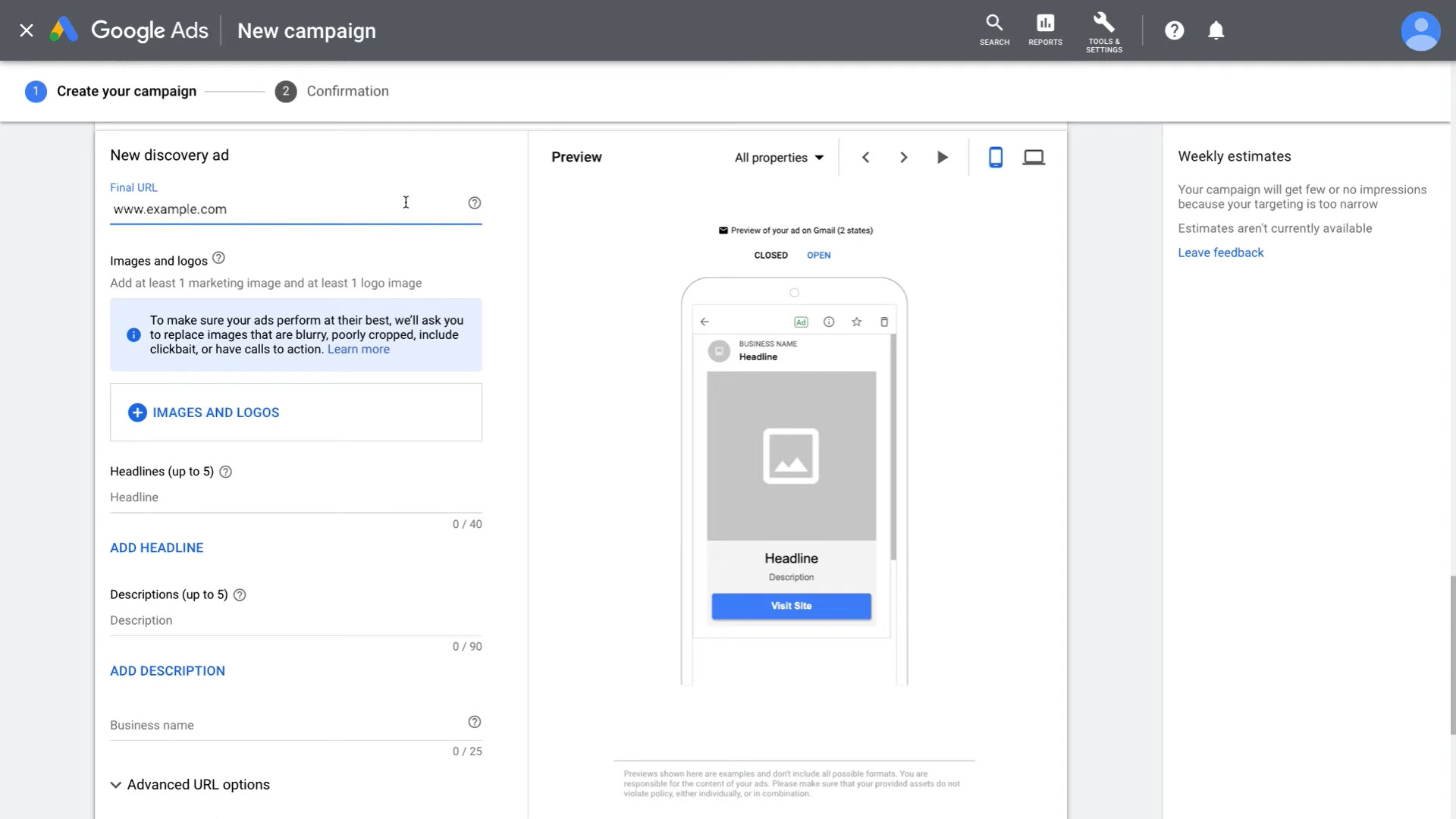
Step 5: Select creatives
When selecting images and logos, you’ll want to use your highest-quality images. To get started quickly, reuse assets you’ve already seen success on other channels like social media.
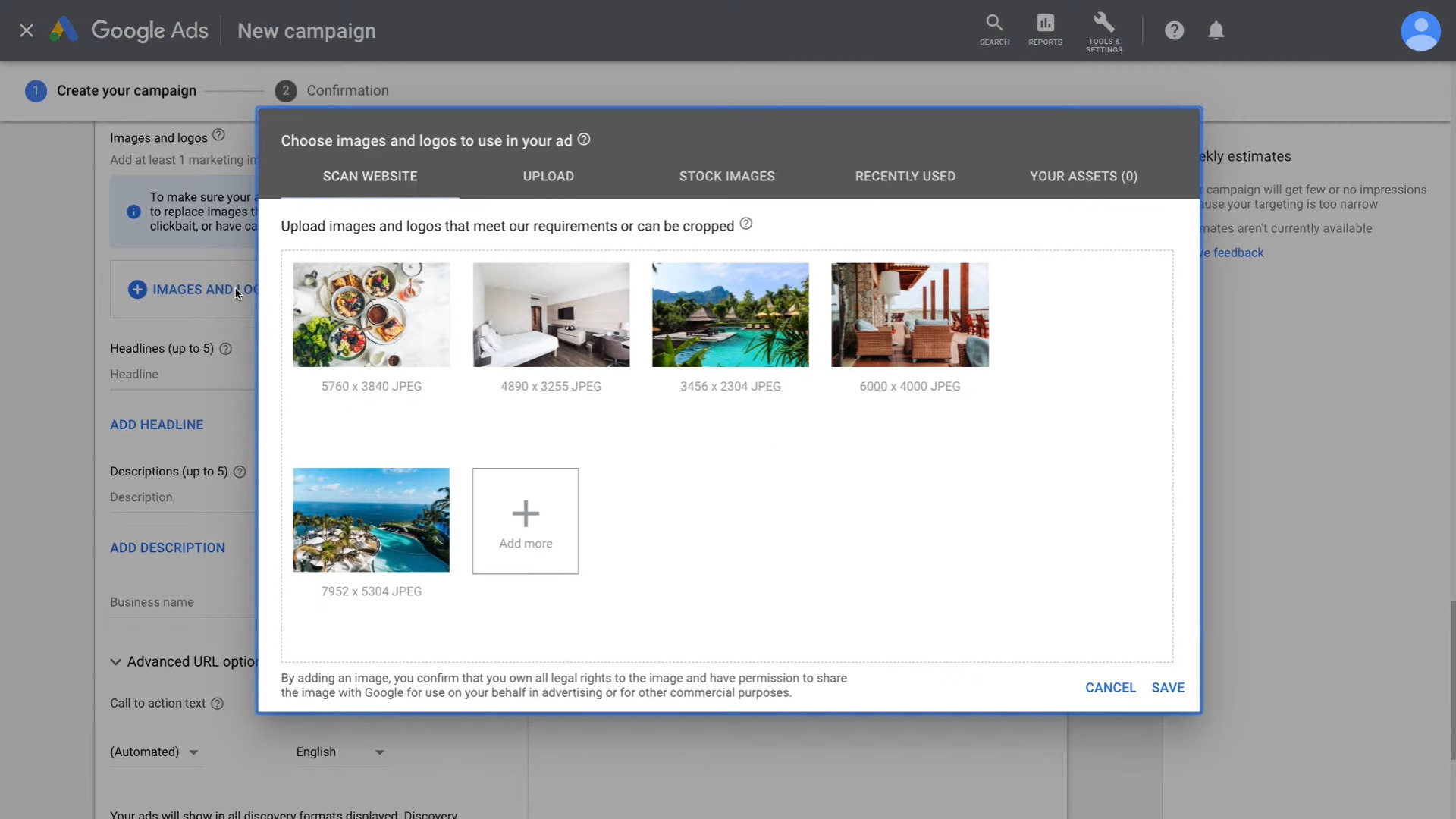
To drive engagement with your ads, let’s take a look at these creative best practices.
- Use inspiring, high-quality images that highlight your brand’s value proposition
- Select creatives that showcase your product clearly, in well-lit settings
- Show people using your product in authentic ways
- Select real scenes
- Provide as many unique assets as possible
- Upload both square + landscape images
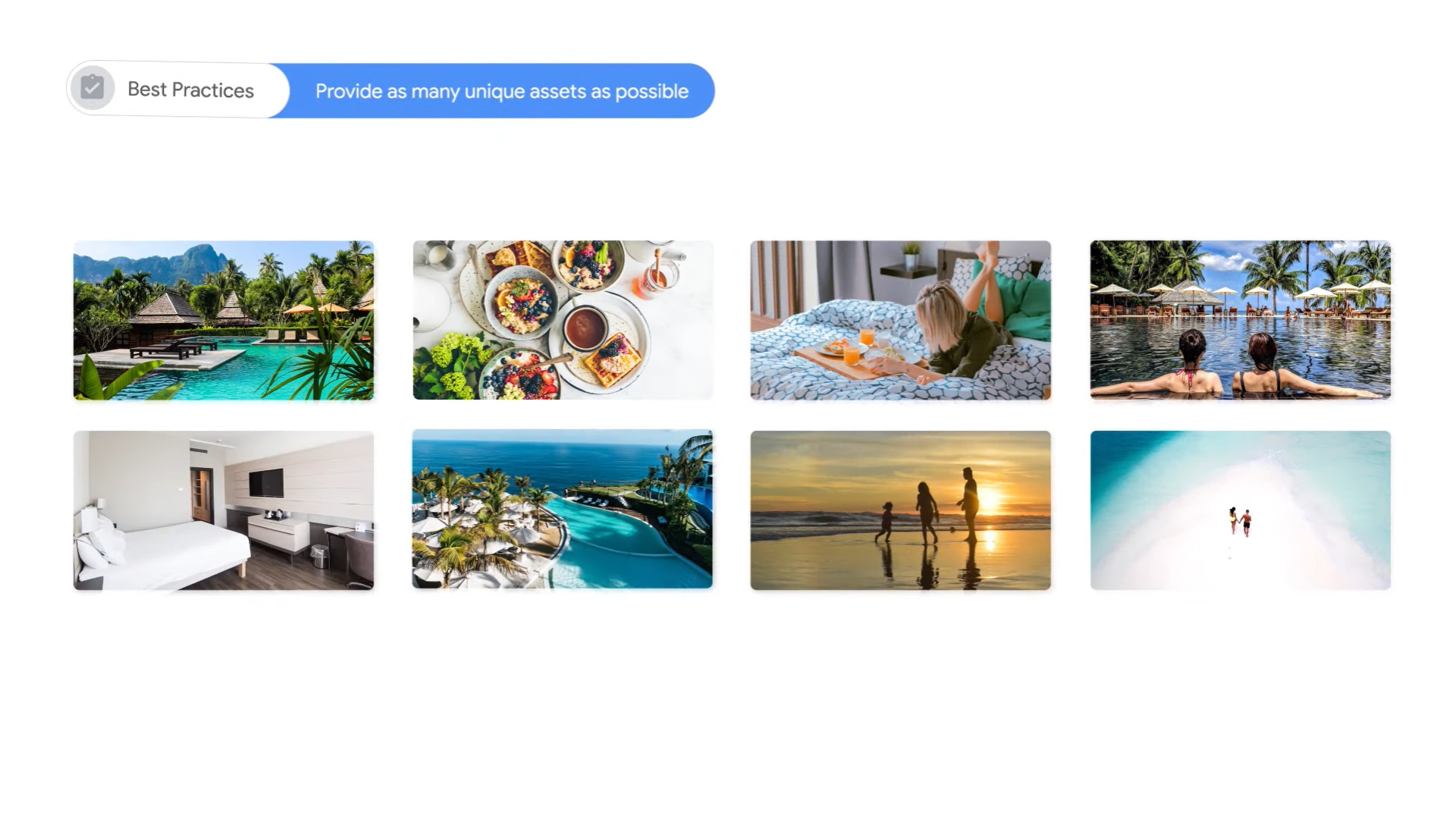
If you don’t have images to get started with, you can use Stock photos tab for some fresh inspiration.
Step 6: Create Headlines and Descriptions
In this step, enter up to 5 headlines and 5 descriptions. Make sure that your texts offer a clear call to action, or highlight any special promotions.
>>> Read more: Google Ads Character Limit: Text Ads Guide for Beginners
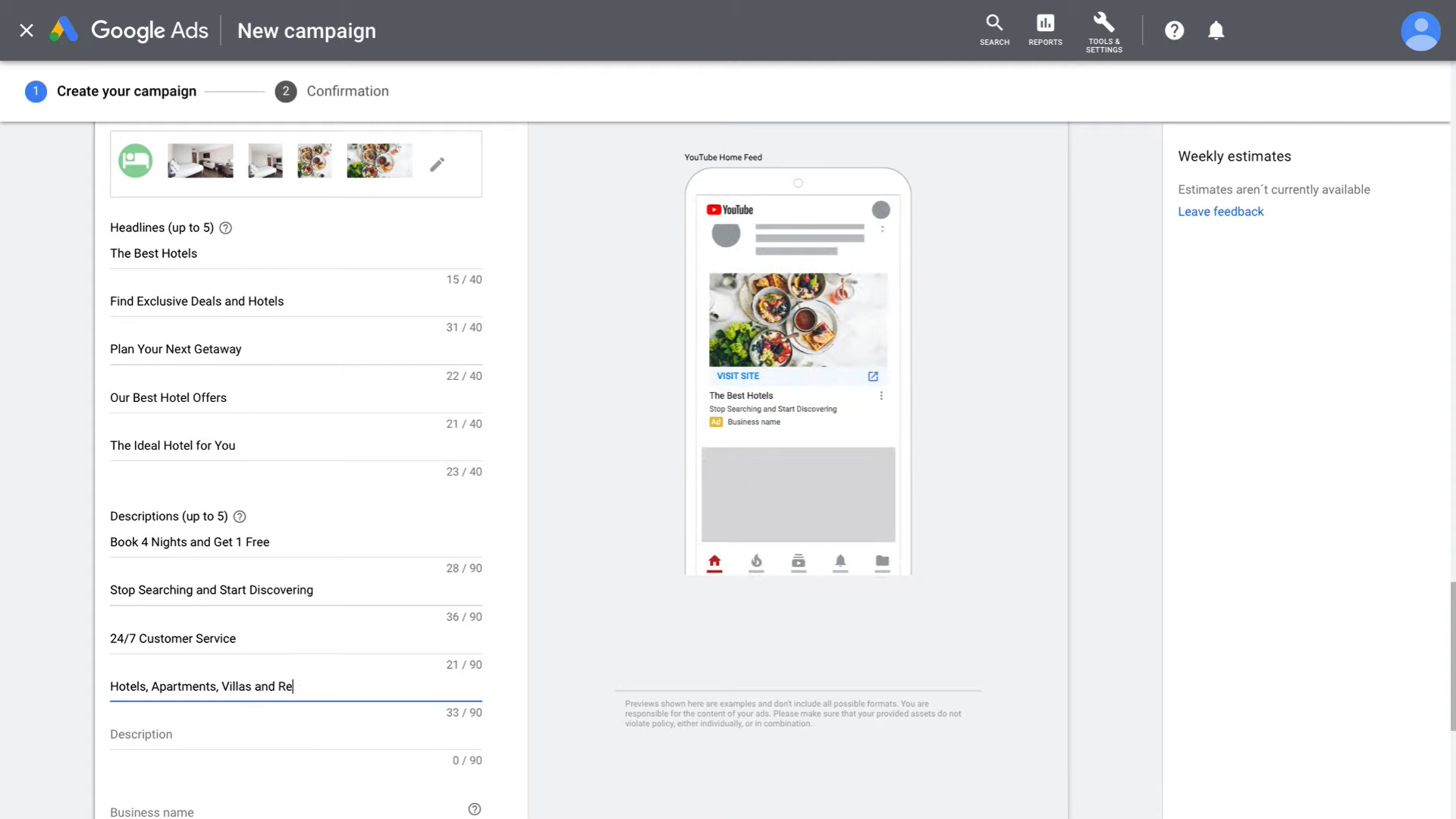
And lastly, provide your business name and select your call-to-action texts.
Step 7: Optimize your Discovery campaigns

It’s recommended to allow two to three weeks before making any adjustments to your campaign. Also, once your campaign has had enough time to learn, be sure to click on “View asset details” to see how each image, description, and headline is performing.
To optimize your campaign, swap out any low-performing assets with fresh creatives.
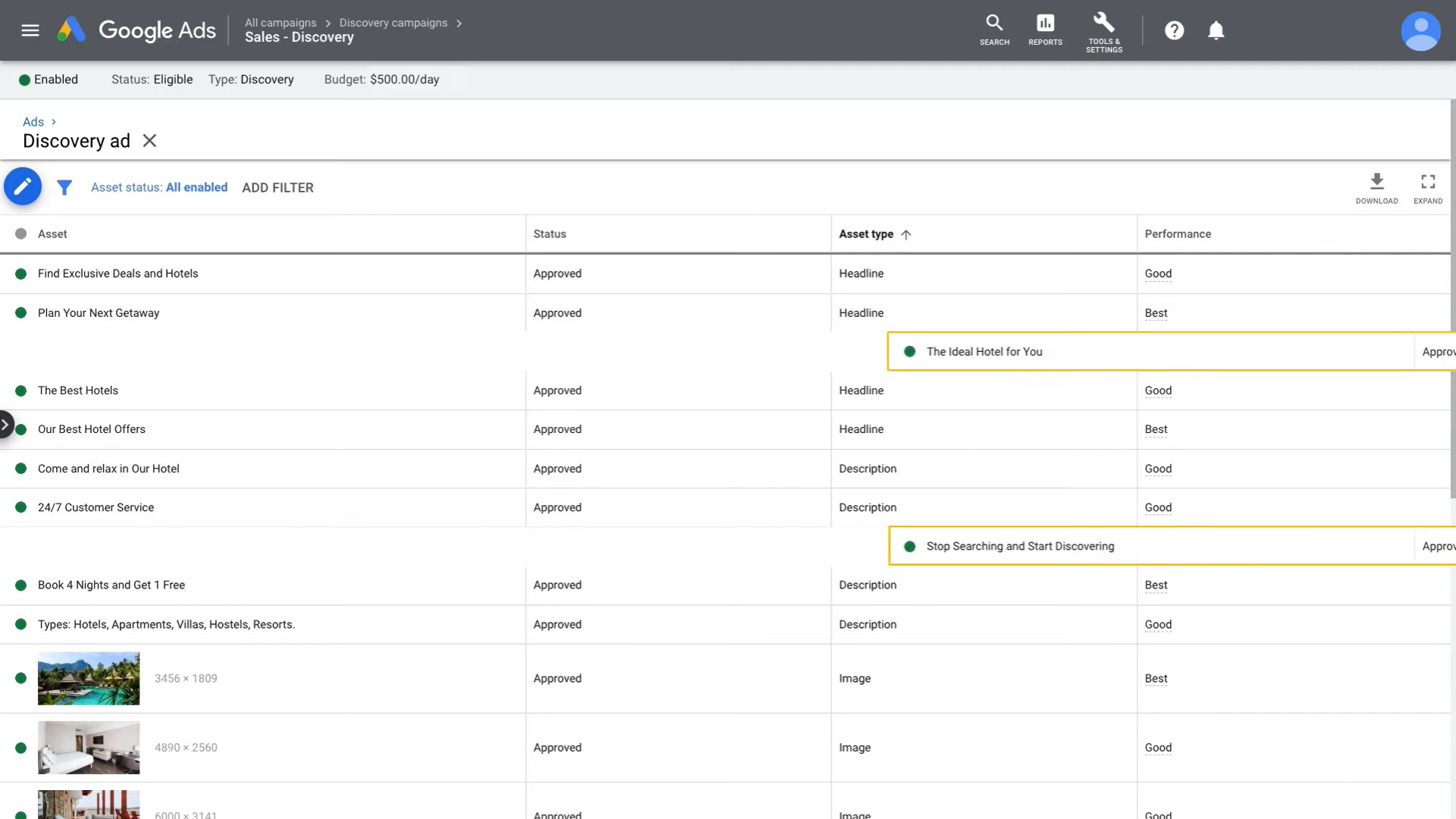
Google Discovery ads best practices
Now that you’re all set to build a comprehensive Discovery ad, are there any tips to boost your Google Ads Discovery campaigns? Let’s take a look at 5 Discovery campaign best practices.
1. Allow audience expansion
Consider using Audience expansion in your advertising strategy if it aligns with your budget. This feature helps reach users beyond your chosen audience. However, be cautious as relying on Google’s machine learning AI can exhaust your budget and hinder optimization.
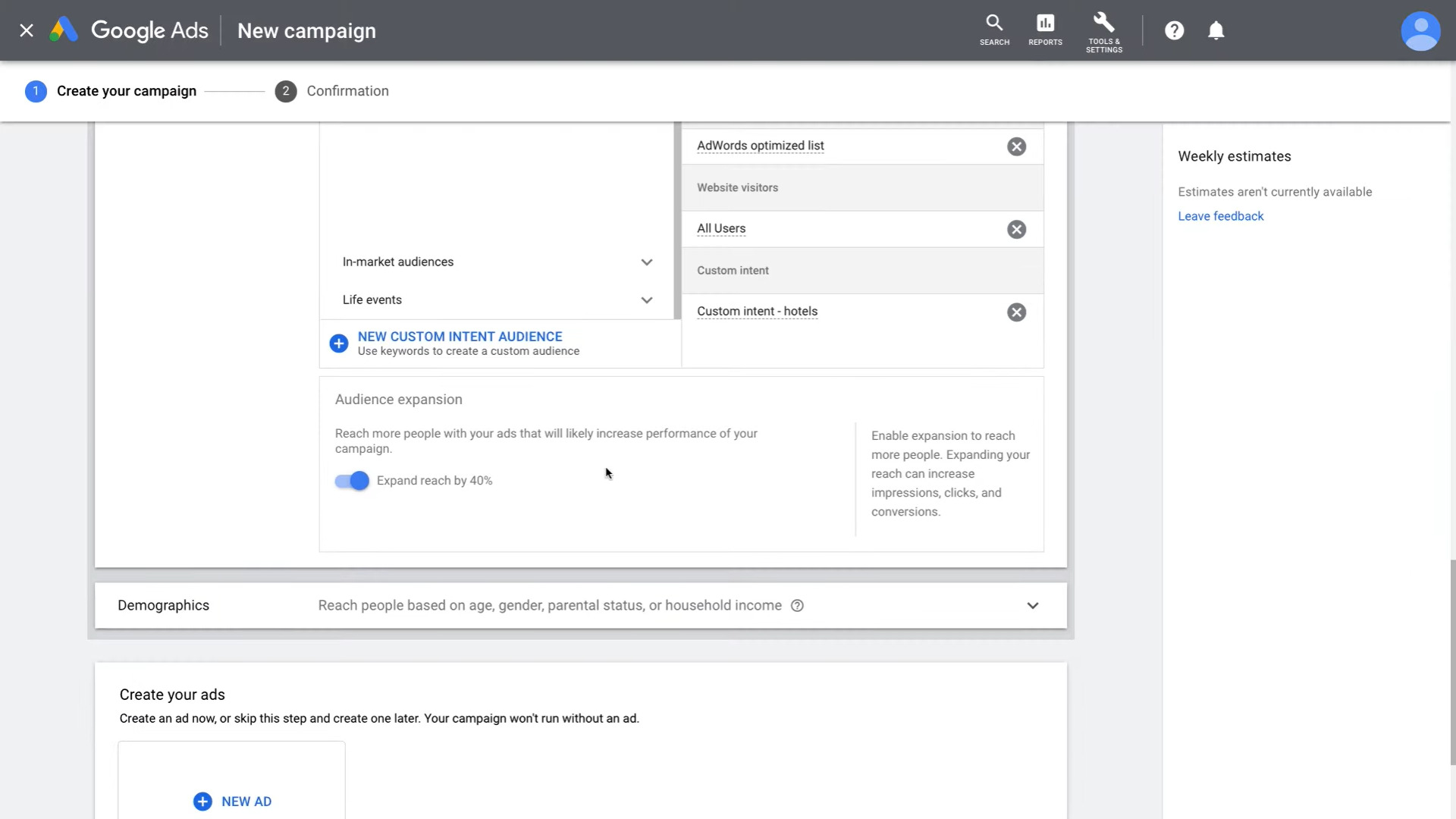
2. Use creative assets
We recommend that you build creative assets as detailed as possible. There’s a good chance Discovery ads will be your first touchpoints with many searchers, who will possibly become your future customers. So set your best presence forward.
Remember to use high-quality images and avoid generic stock photos.
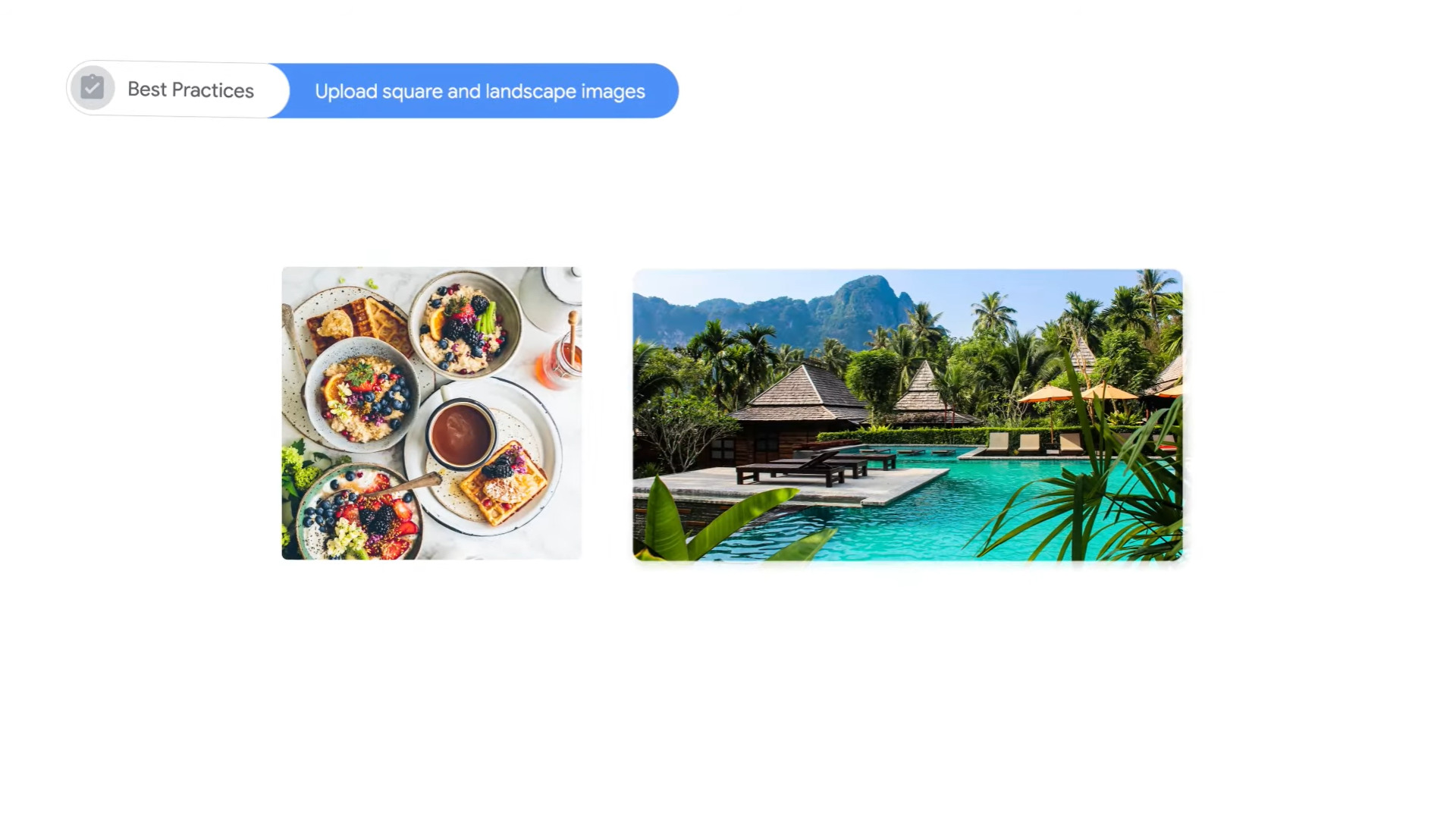
Besides, we suggest including at least five landscape and square images. If your goal is to create a variety of creative assets, make use of both single and carousel image ads.
>>> Read more: Google Discovery Ads Specs and Pro Tips for Brand Success
3. Pause searchers’ scrolls
Since Discovery ads reach people who aren’t actively searching for your brand, you’ll need to pull out all the stops if you want ad performance. I.e. eye-catching headlines, creative assets, and detailed descriptions that tap into emotions. Often, your goal is to convince someone that they need what you’ve got when they don’t even know it.
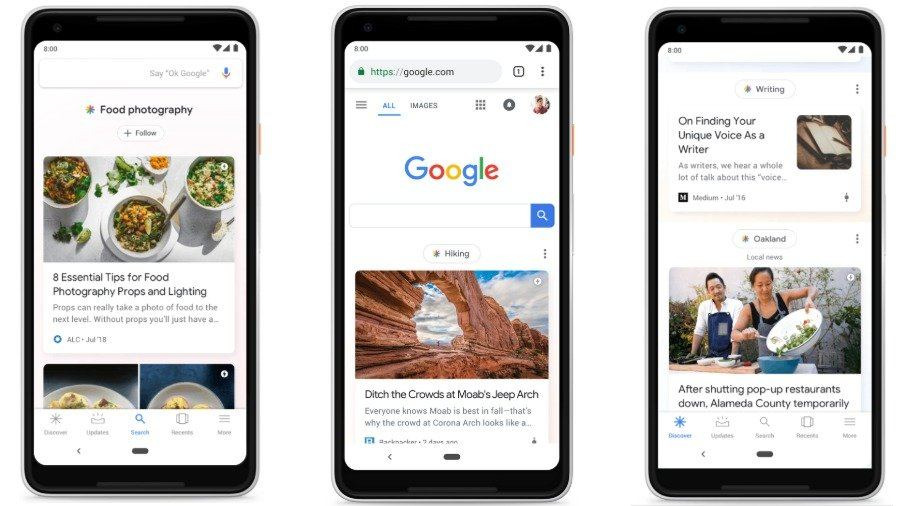
4. Become a storyteller with your carousels
Carousels give you a lot of creative space to grow. Specifically, use them to tell a narrative about your brand and values to trigger users’ wants.
Please note that this approach can significantly impact all your carousel ads, not just Discovery campaigns.
5. Improve your landing page experience
We saved the best for the last. Remember the URL you provided while creating your business profile? This is where you should deliver what you promised in your Discovery ads since they should lead to the obvious next step in your customer’s journey. I.e. Discovery campaigns are to drive qualified leads, driving actions depends on your online presence.
Frequently Asked Questions
You have learnt to set up Google Discovery campaigns. Next, what else do you need to know about these visually engaging ads?
How are Google Ads Discovery campaigns different from others?
Discovery ads are targeted by audiences, not keywords like other ad types. I.e. advertisers can choose which audiences they want, including remarketing, detailed demographics, in-market audiences, life events, and custom intent.
However, there are certain settings that cannot be manually adjusted when using Discovery campaigns. Discovery campaigns automate certain campaign settings, such as bidding and targeting. Note these down as you cannot manually adjust the following features:
- Manual bid strategies
- Delivery method
- Device targeting
- Placement targeting (including exclusions)
- Frequency capping
- Ad rotation
- Contextual targeting
The Discover feed in the Google App is currently unavailable to consumers in Australia, Germany, and France. So, in case you plan to target those countries, your ads will be limited to the YouTube home feed and the Gmail feed.
Examples of Google Discovery ads results?
Since the launch of Discovery a few years back, these campaigns have been monitored across various Google accounts. Discovery has helped to drive incremental conversions at an efficient CPA (usually lower than the account average) while expanding advertisers’ reach past the standard SERP.
Check out the results of two instances of Google Ads Discovery campaigns below:
Client A: Discovery Campaign Revamp Results
| Metrics | Performance |
| Conversions | +247% |
| CPA | +1% |
| Impressions | +285% |
| Clicks | +298% |
Client A experienced a remarkable boost in conversions, with a 247% increase, while maintaining a relatively flat CPA. Impressions and clicks also saw substantial growth, with a 285% and 298% increase, respectively. These figures demonstrate the effectiveness of Discovery campaigns in driving awareness and engagement.
Client B: Discovery vs. Display and YouTube Campaigns
| Metrics | Discovery | YouTube | Display |
| Cost per lead (CPL) | +26% | N/A | +120% |
| CVR | +154% | +84% | N/A |
| New Email Sign-ups | 58,000+ | N/A | N/A |
For Client B’s newsletter campaign, Discovery ads outperformed YouTube and Display campaigns in terms of CPL and CVR. Display ads achieved a higher CPL of 120% compared to Discovery’s 26%, but had a remarkably 154% higher CVR. The campaign resulted in over 58,000 new email sign-ups, showcasing the effectiveness of Discovery campaigns in generating conversions.
>>> Read more: Major Differences between Discovery Ads vs. Display Ads
Final word
In summary, Google Discovery ads provide advertisers with an opportunity to engage with a wide audience of potential customers through visually appealing and personalized advertisements across multiple Google platforms.
As a Google Premier Partner, Mega Digital provides access to valuable Google advertising insights. Our team of experts is ready to assist you in reaching your advertising goals. Explore our Google Advertising services today!







